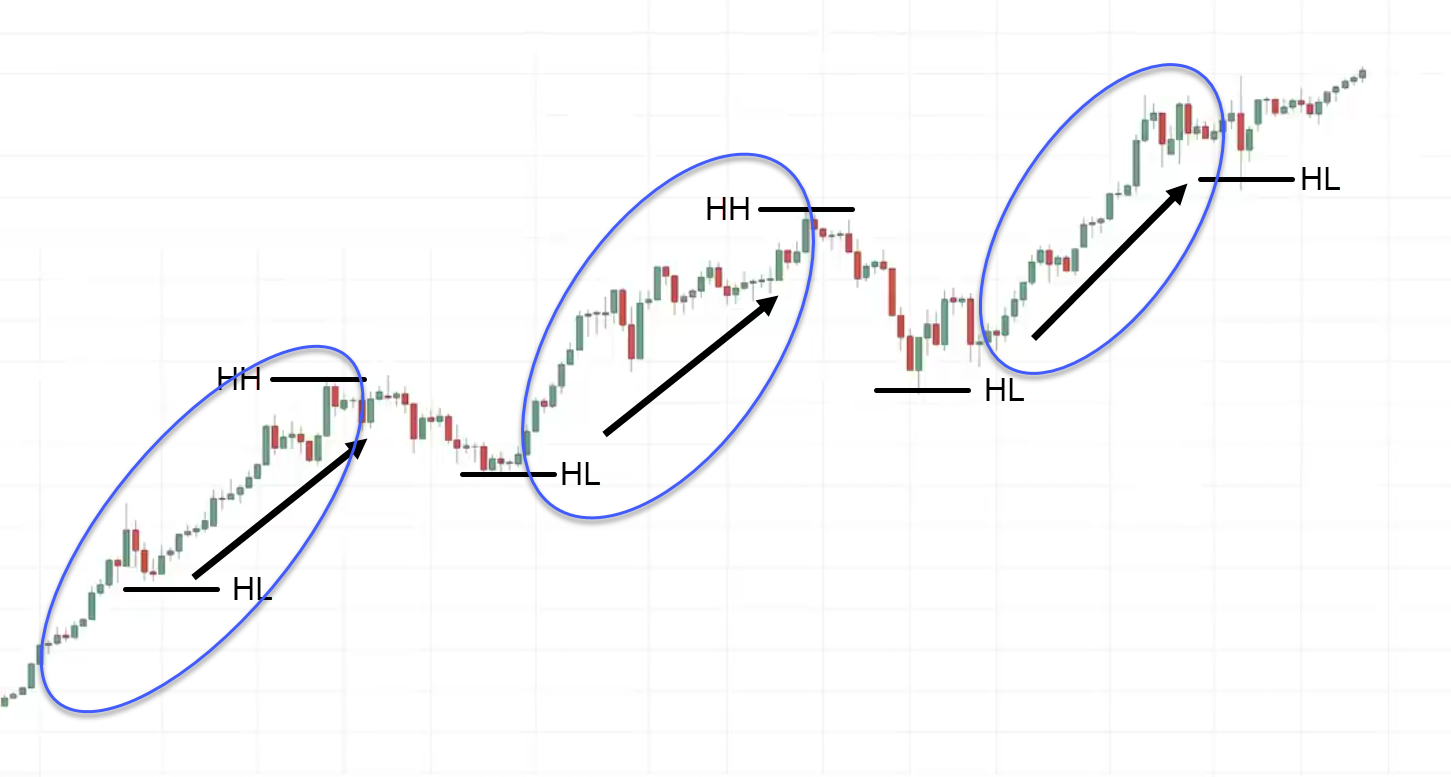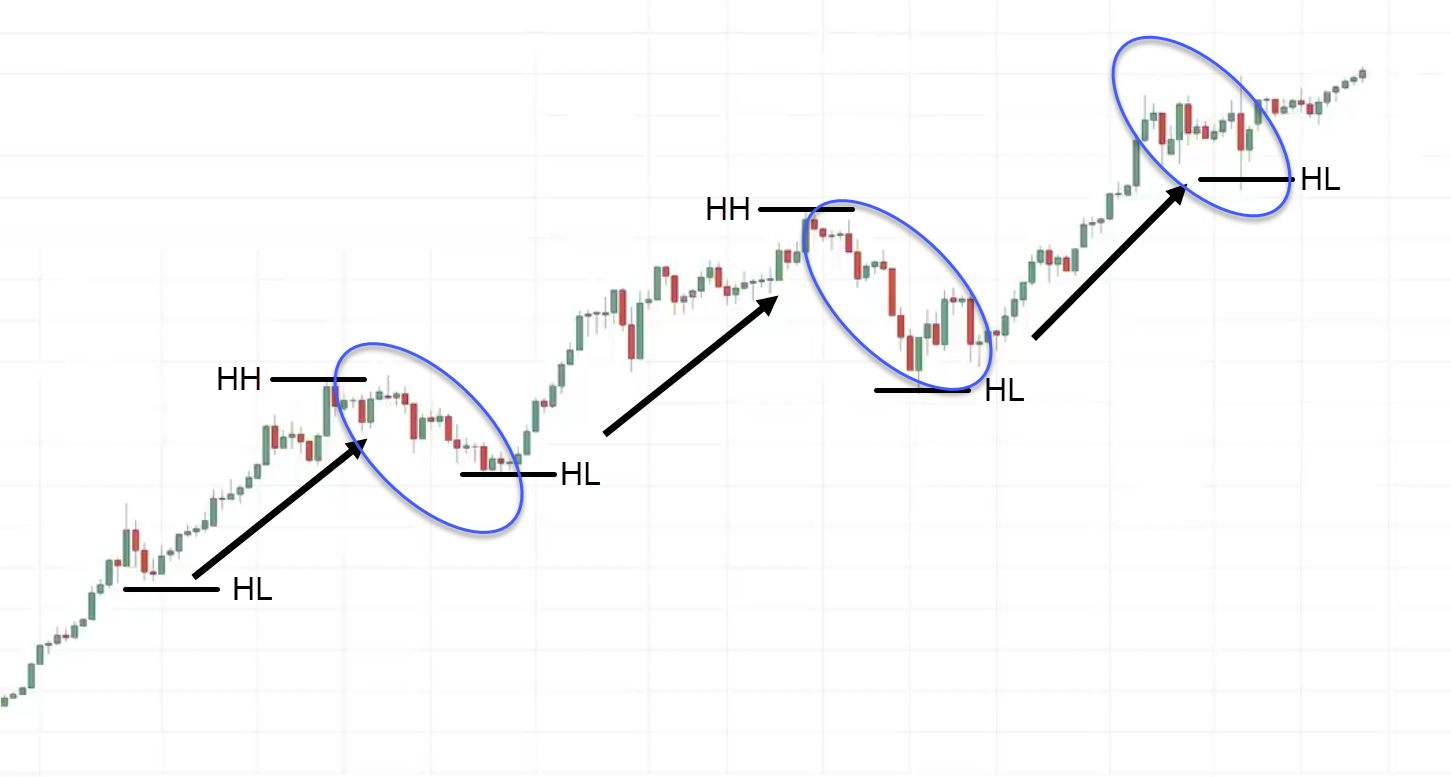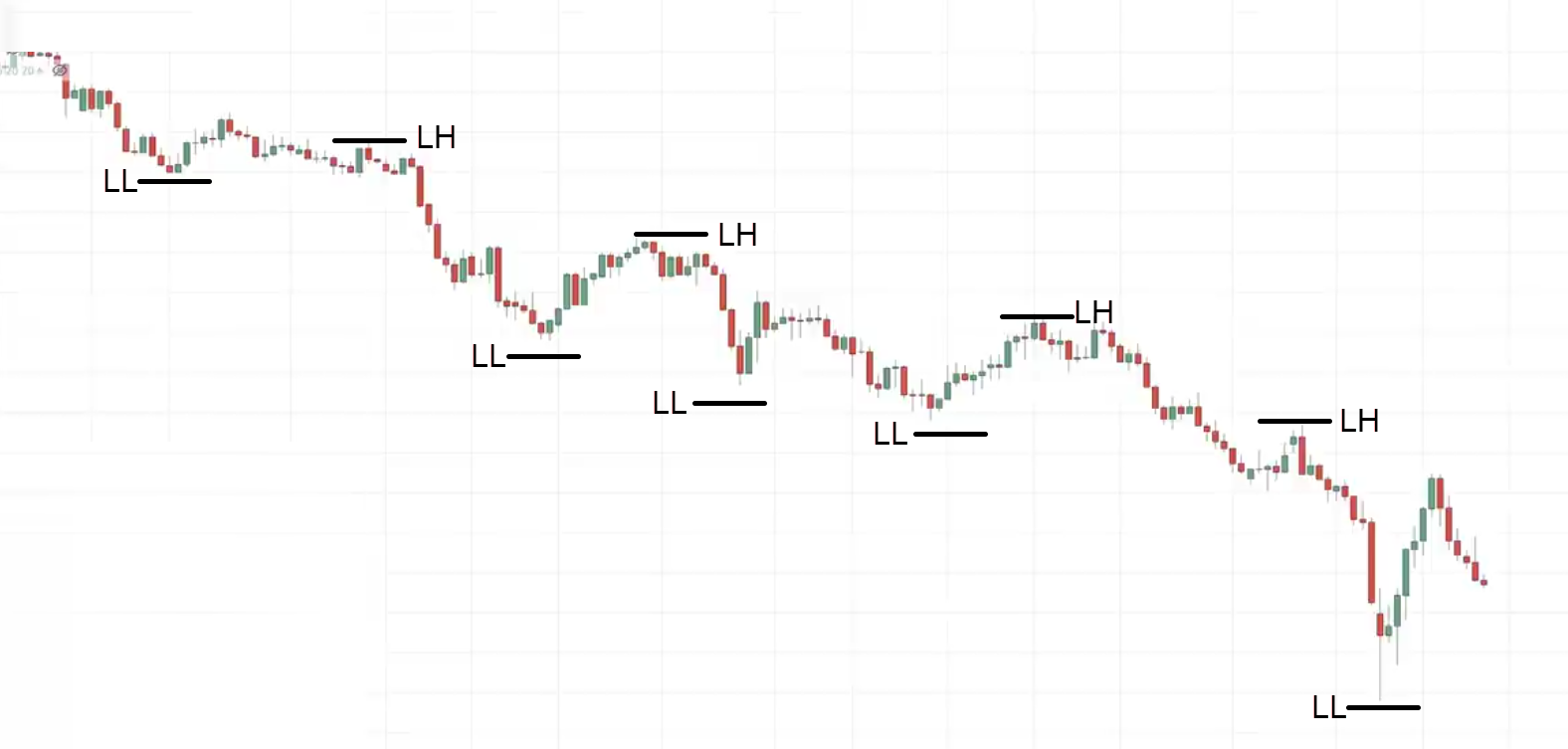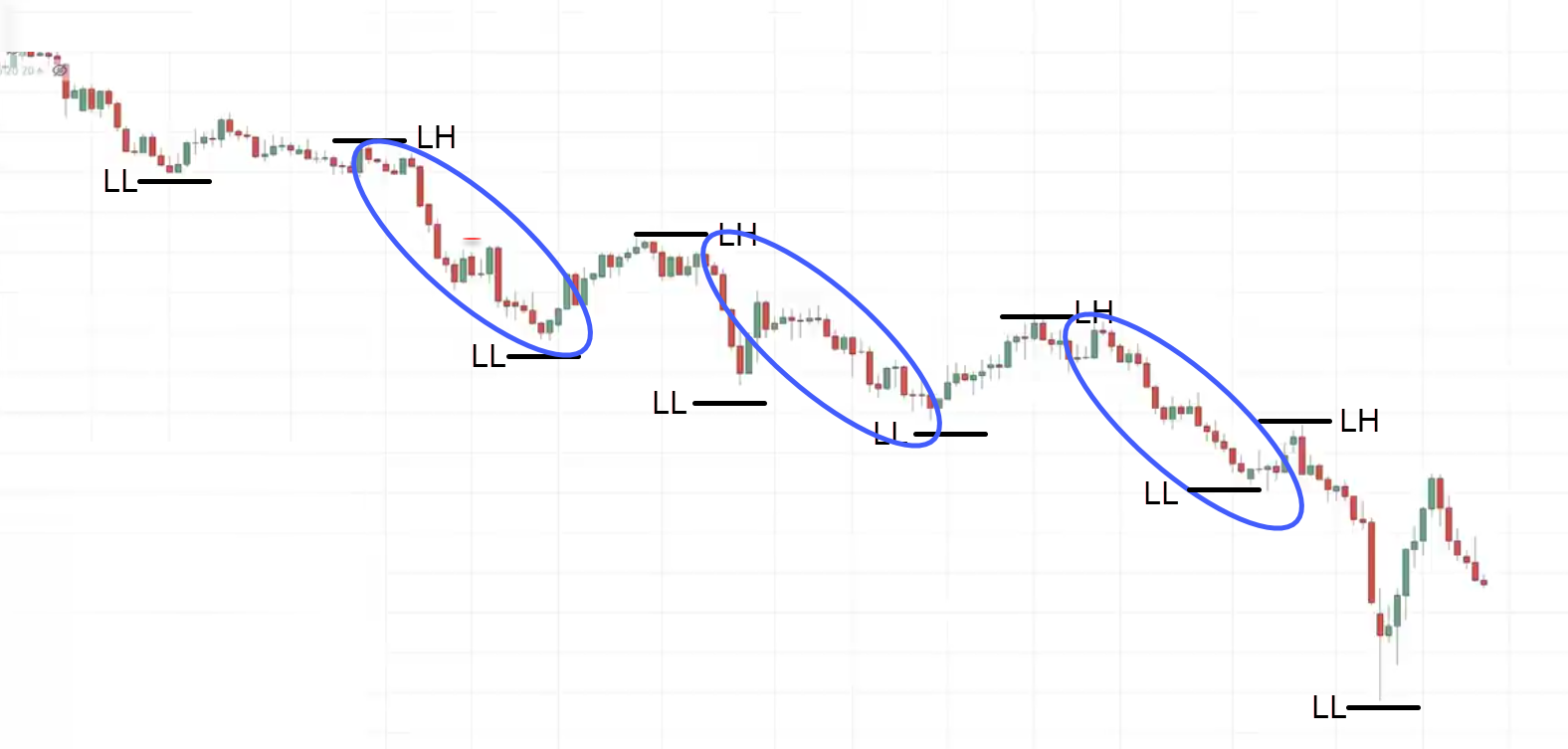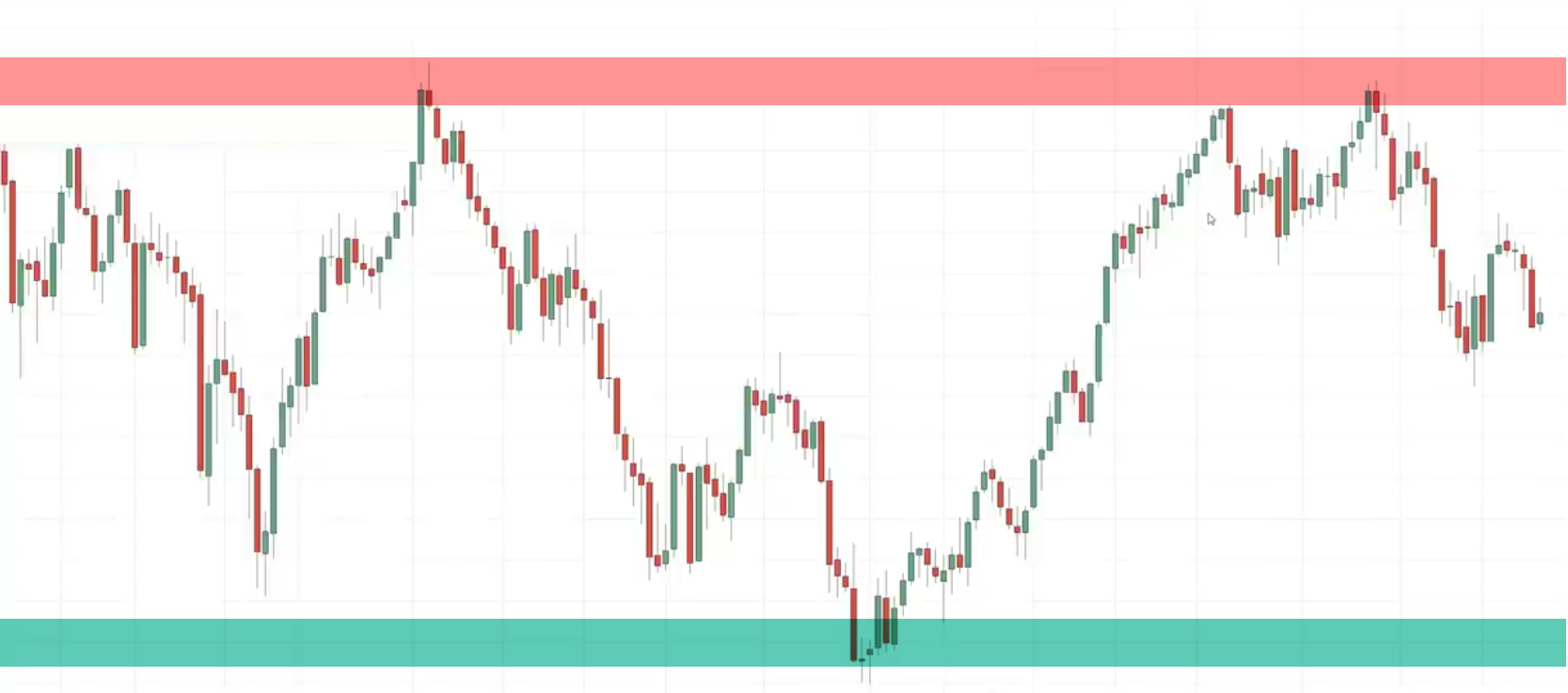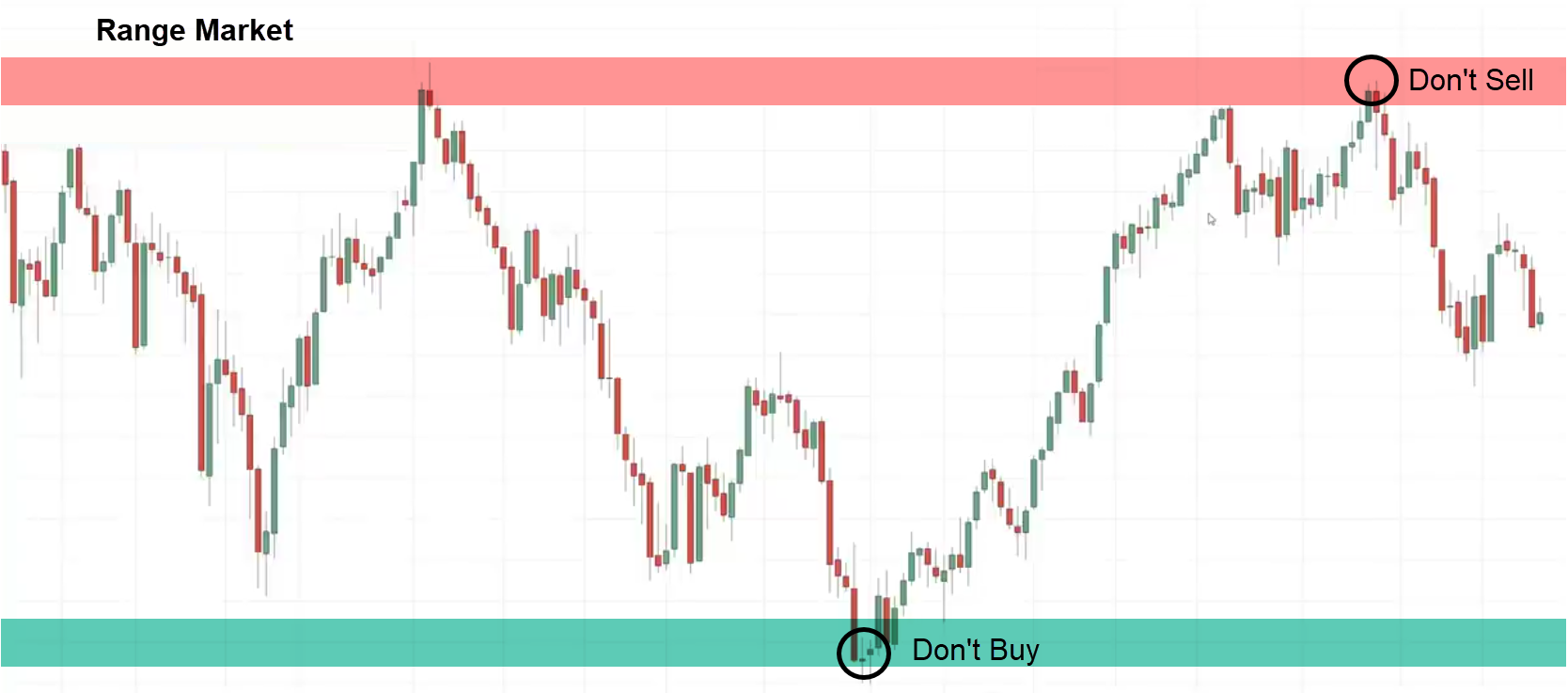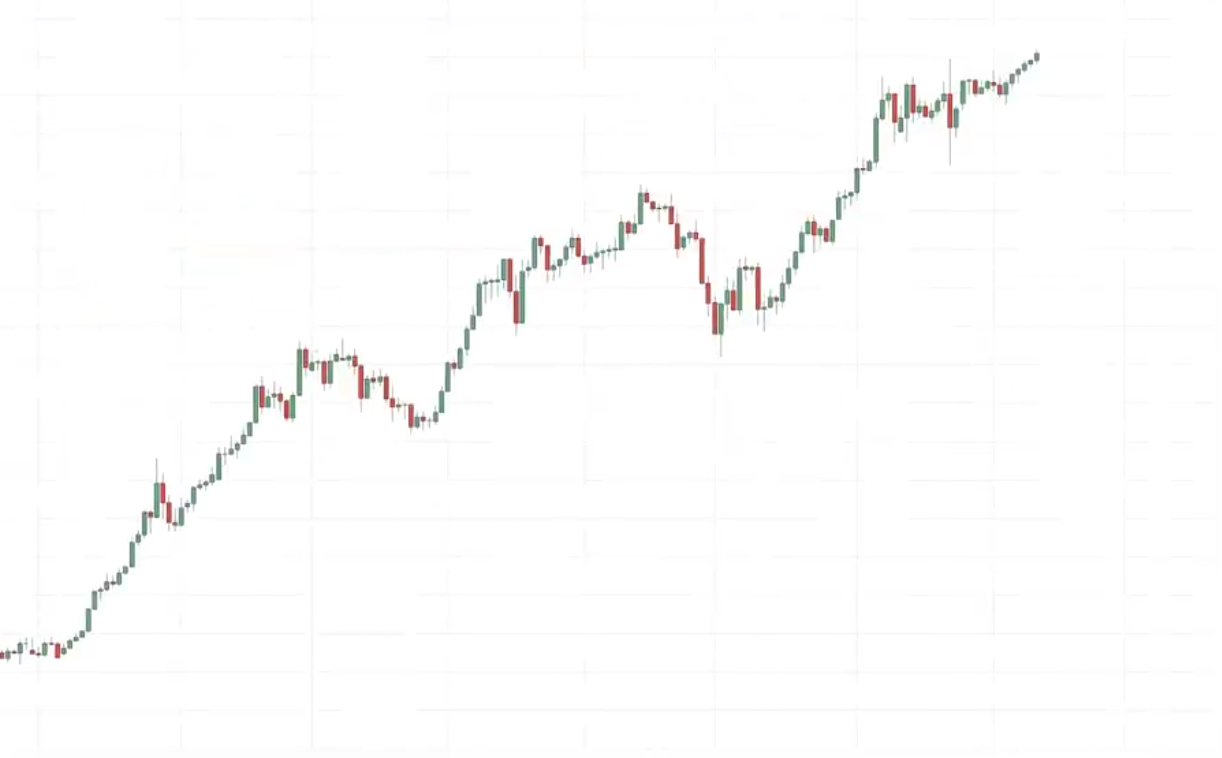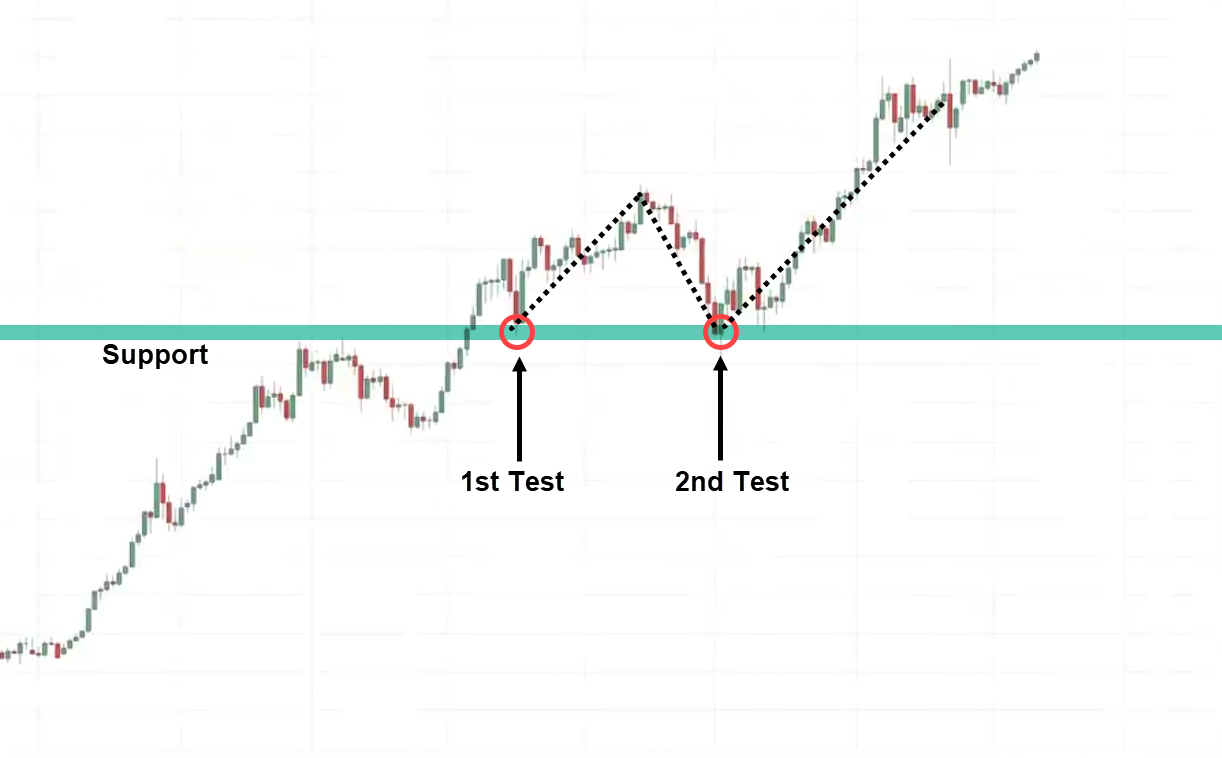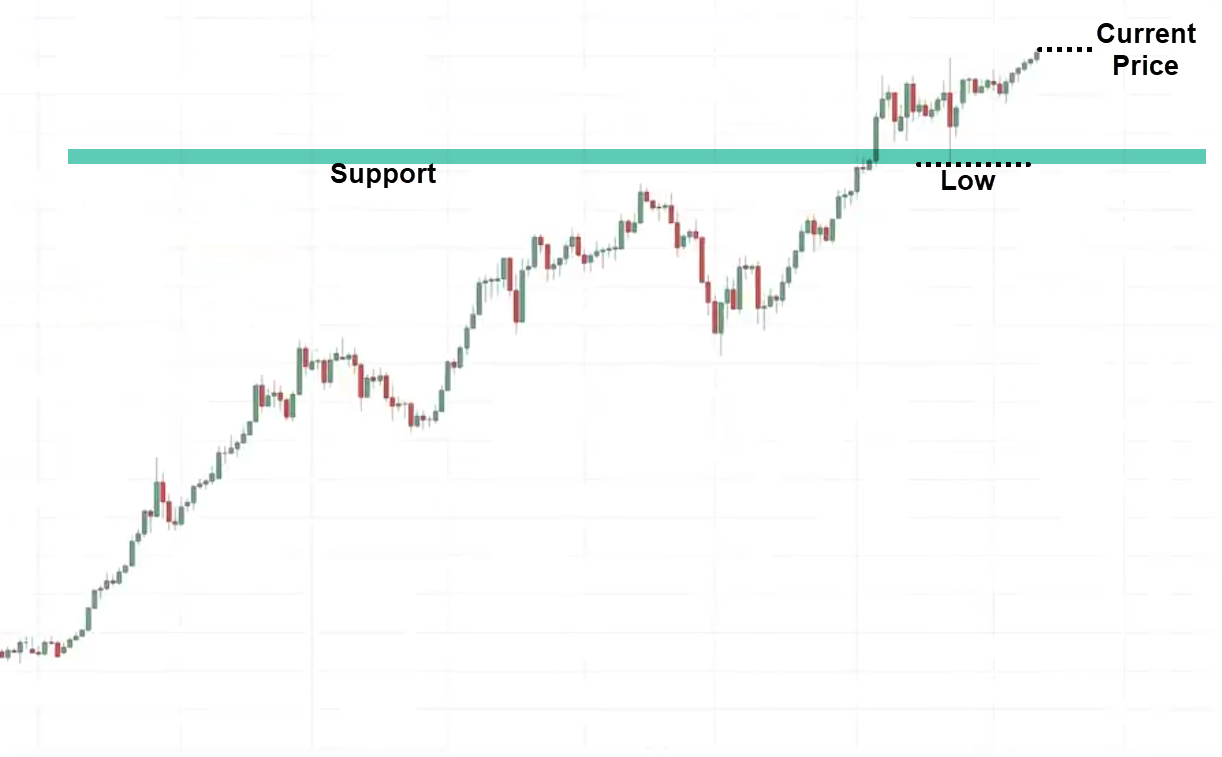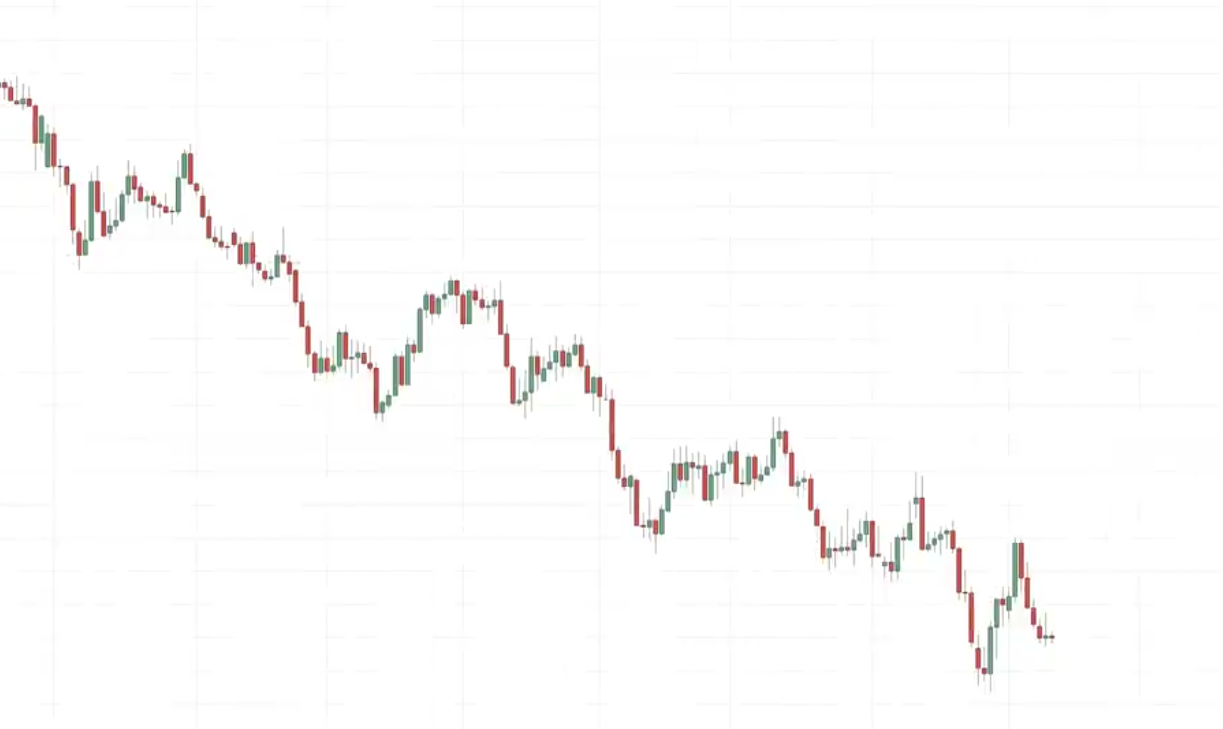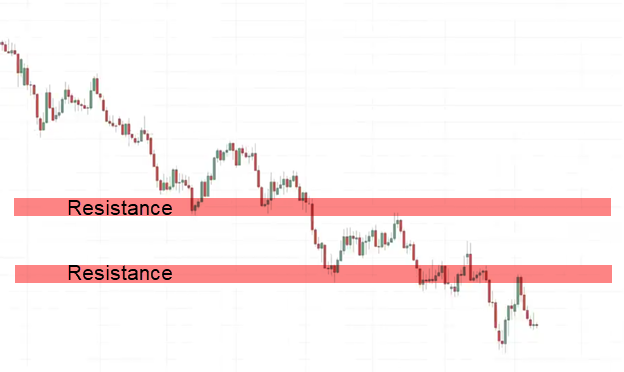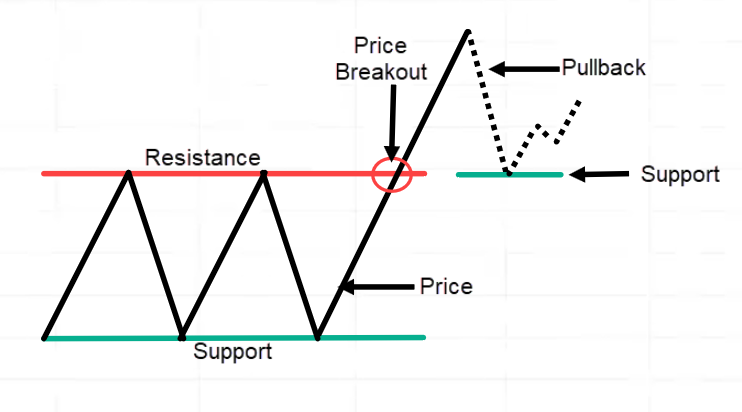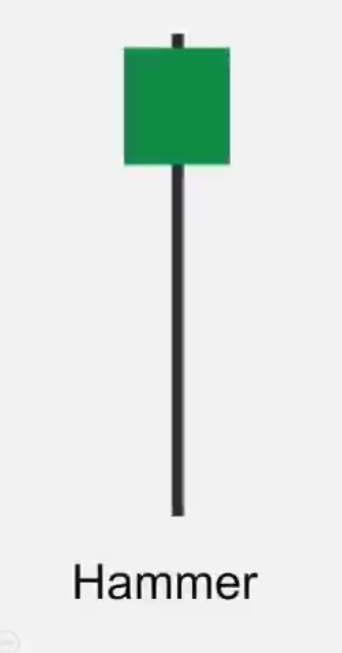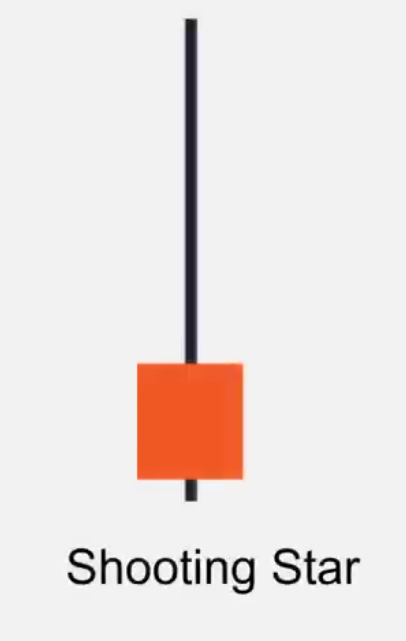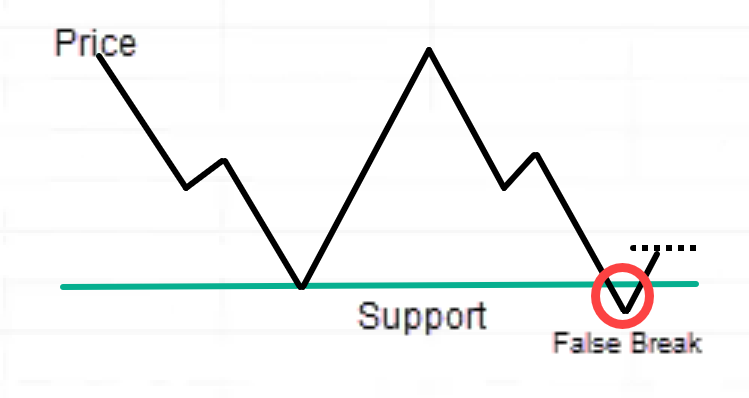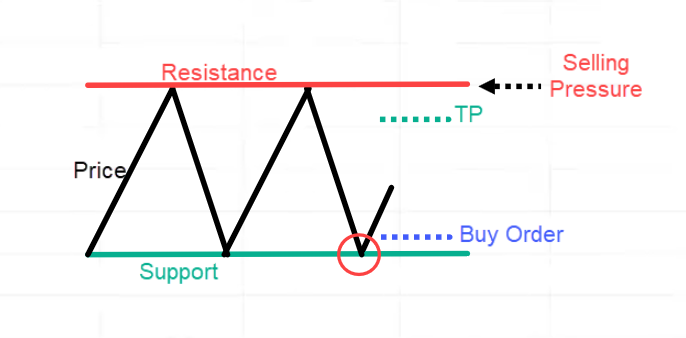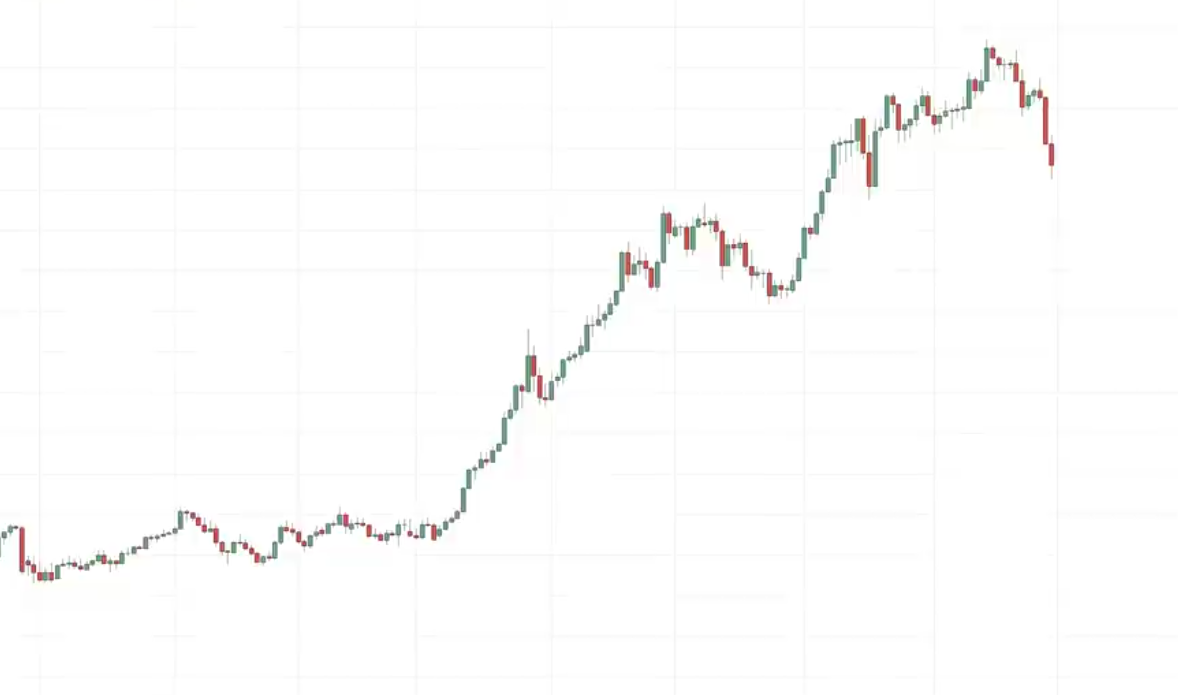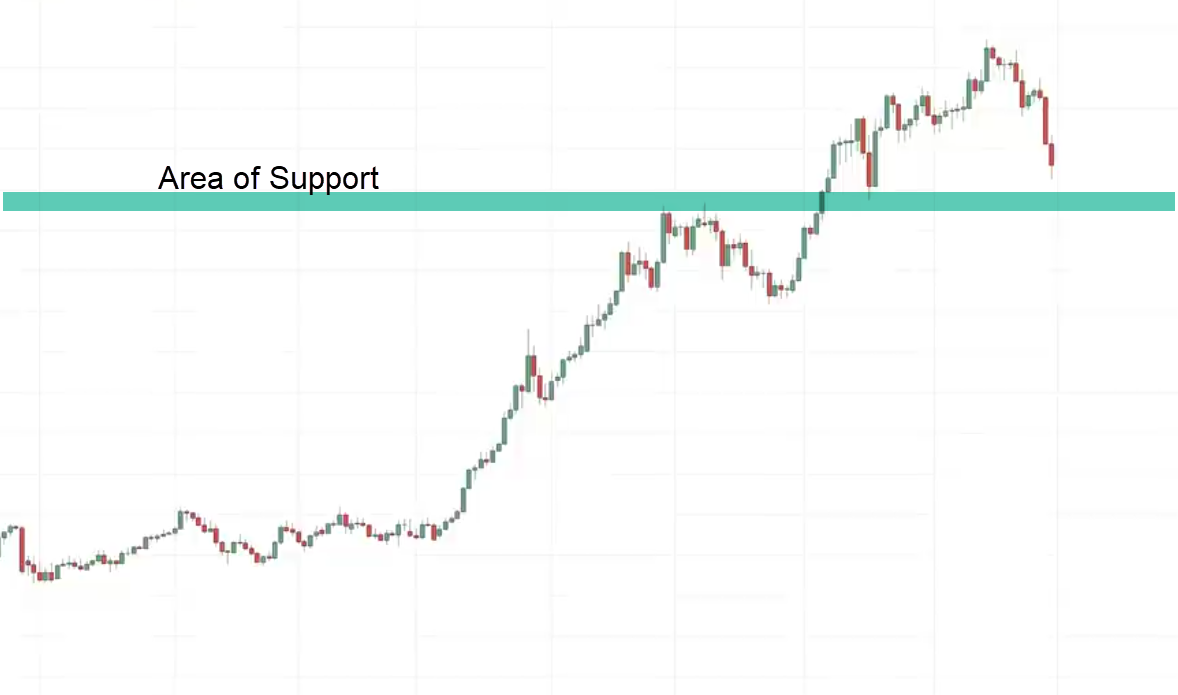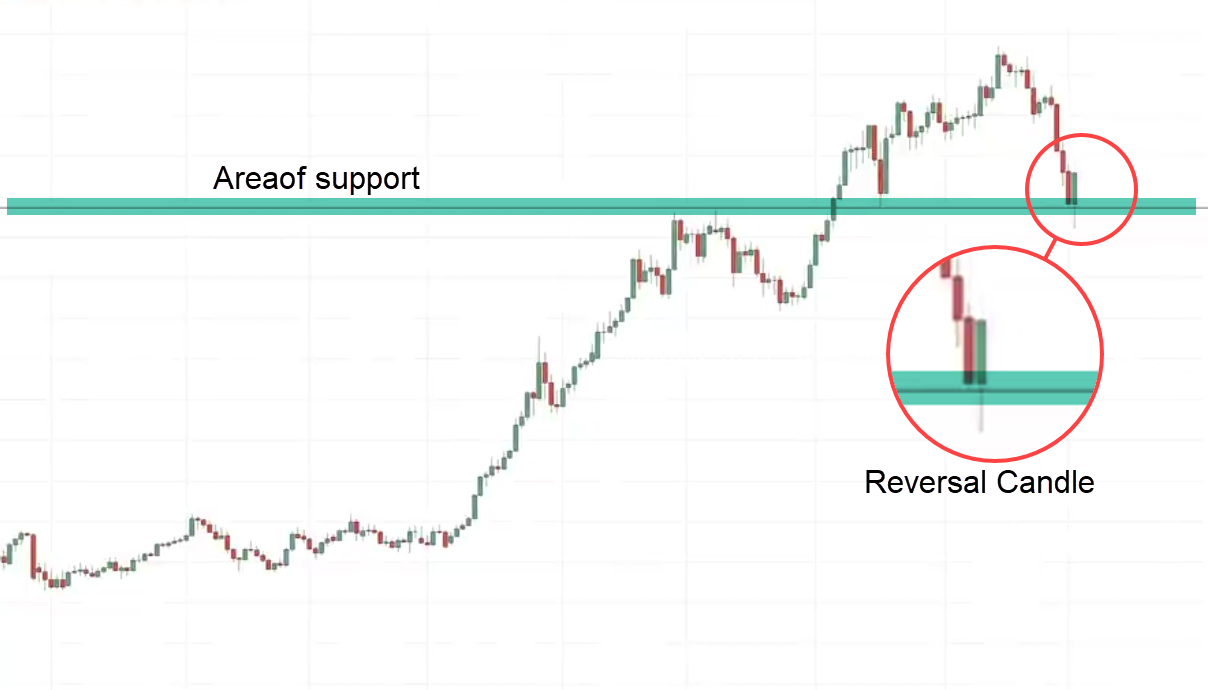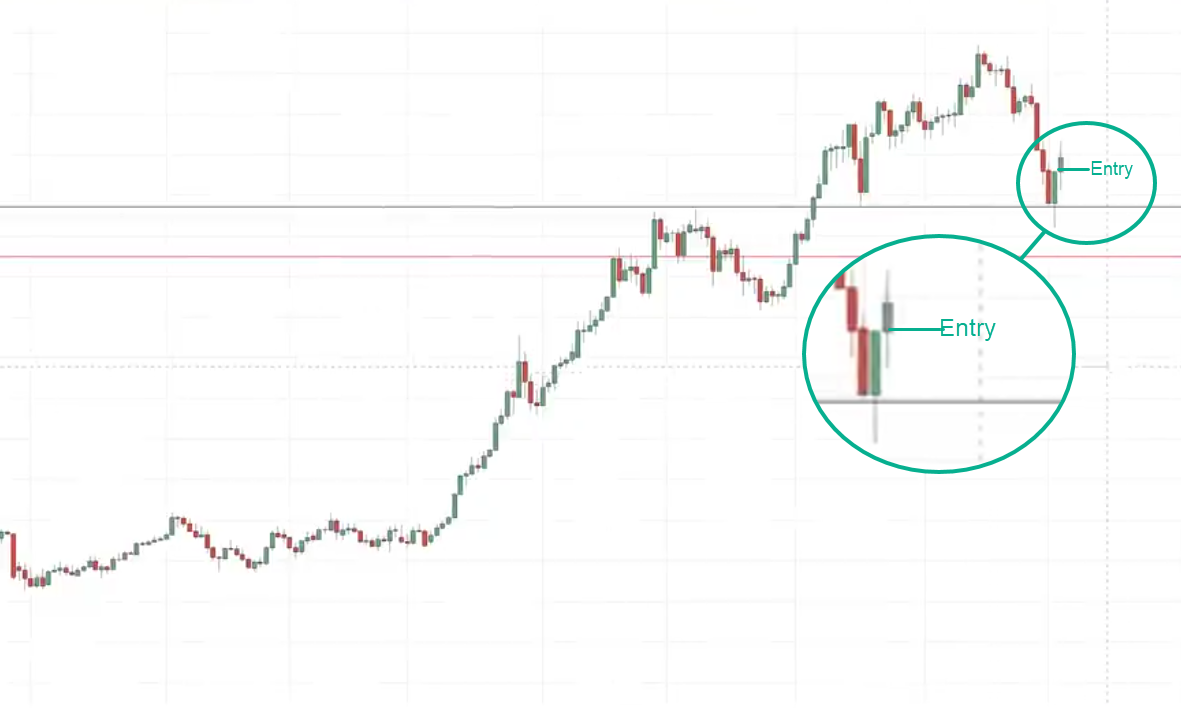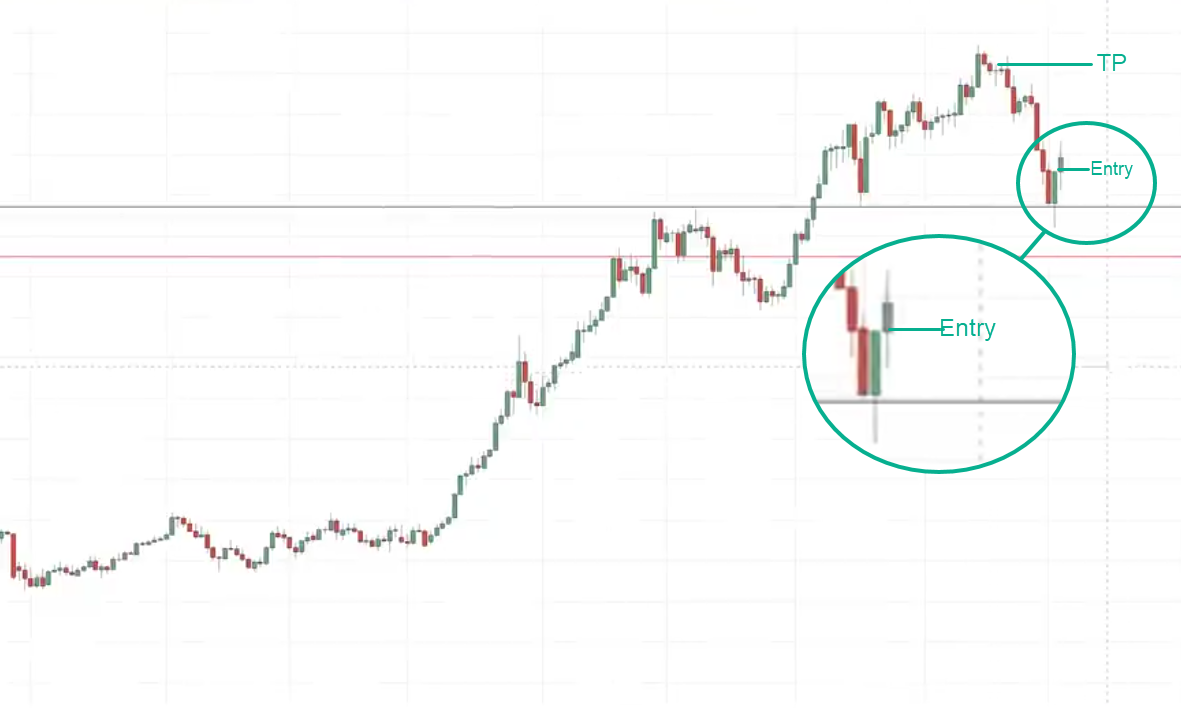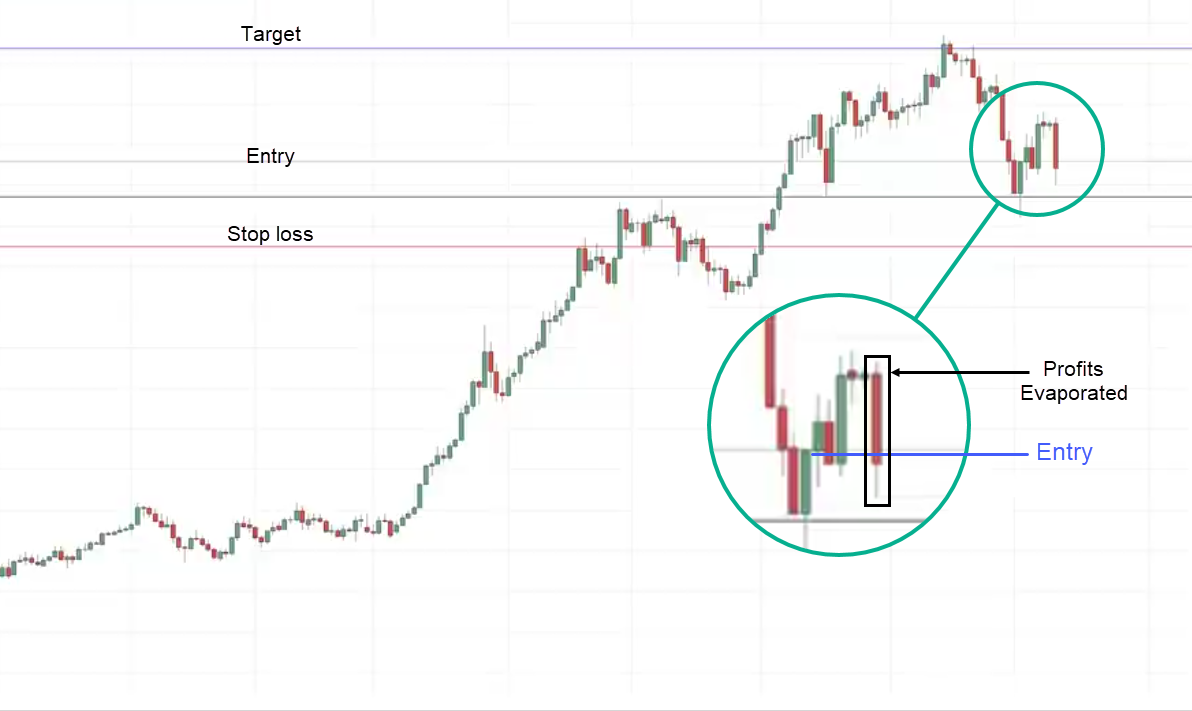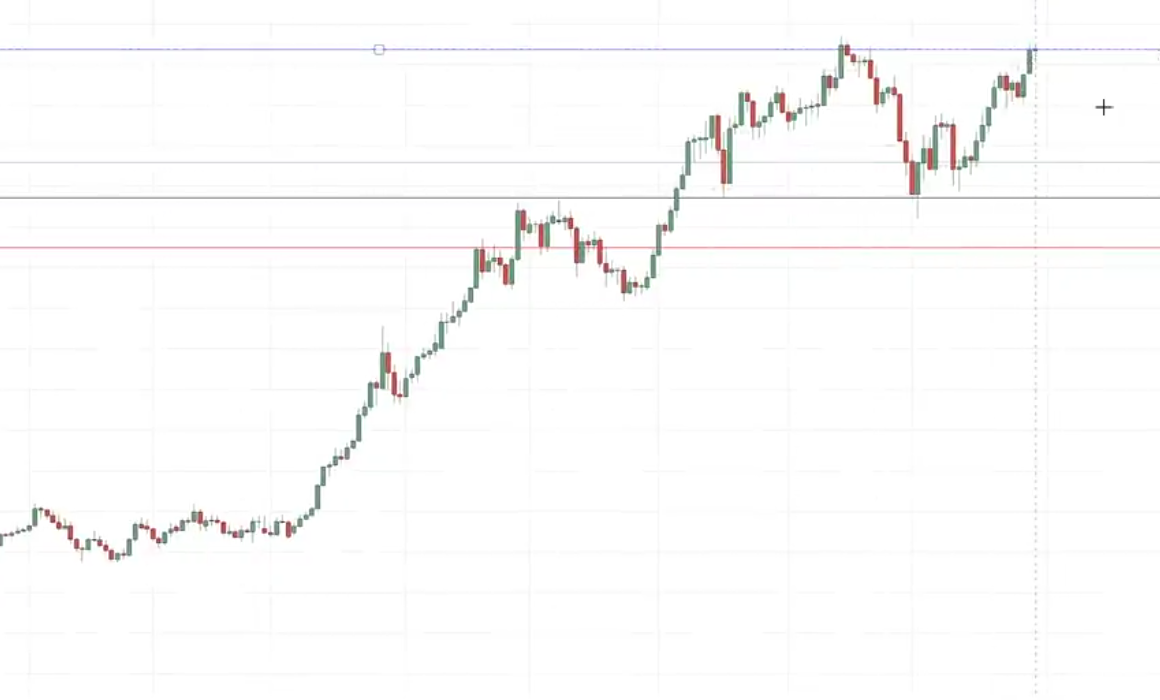Market Structure
The primary a part of this formula is what I call Market structure.
The concept could be very easy.
What do you do in a given market condition?
In the event you take into consideration this the market can only be in considered one of three market conditions either it’s in an uptrend, a downtrend, or range.
Uptrend Market
The market is claimed to be in an uptrend when you may have a series of upper highs and better lows. That is what I mean:
The market is heading up higher.
Let me ask you…
Whenever you see the market in an uptrend, do you need to be a buyer or a seller?
It’s a logical query.
The reply is you need to be a buyer.
Because when the market is in an uptrend and also you’re a buyer.
Your upside potential is loads higher.
Take a look at the magnitude of the up move when the market is in an uptrend.
In the event you have a look at this:
When the market goes up. There is a large upward movement
You’ll be able to see the potential that the market would move in your favor when you’re a buyer in an uptrend.
In the event you take into consideration this should you are a seller.
The potential that the market would move in your favor is smaller. Here’s what I mean:
This is the reason in an uptrend, as much as possible you need to look for getting opportunities.
Downtrend Market
That is just the inverse.
Within the downtrend, you’ll notice that the value makes a series of lower highs and lower highs.
Here is an example:
The market is heading down.
One thing in regards to the market is that it doesn’t go down in a single straight line.
It makes a pullback and goes down lower.
In a downtrend you need to be a buyer or seller?
You need to be a buyer… Just kidding!
You need to be a seller.
I search for selling opportunities because again the concept is identical should you are selling within the downtrend have a look at the profit potential.
That is the quantity of profit potential that you could possibly get towards the downside.
That is the magnitude of the move that you could expect in comparison with buying in a downtrend.
You have a look at the profit potential should you’re a buyer within the downtrend:
That is the move that you could possibly get.
The move is loads smaller in comparison with the downward momentum.
Range Market
That is when the market is just contained between the highs and lows.
That is what I mean:
Let me let you know a secret…
When the market is in a spread, I don’t just randomly buy the lows of support or sell the highs of resistance.
In other words, I don’t simply blindly buy or sell over here:
What I do is that…
I still will take a direction when the market is within the range.
Sometimes, I would look to purchase at support within the range market and sometimes I would favor to sell at resistance in a spread market.
I’ll explain to you shortly why I even have this particular habit and also you’ll discover why.
You may have to be adaptable and versatile.
The Market structure offers you a framework to know when to purchase when to sell and perhaps even when to remain out of the markets.
Area of Value
Uptrend
Where on the chart do you purchase or sell?
You should utilize a really powerful technique or concept called support and resistance.
Let me explain…
Support is an area on the chart where buyers could are available in and push the value up.
Resistance is an area on the chart where sellers could are available in and push the value down.
Here is an example:
The market is in an uptrend.
Where on this chart should we glance for getting opportunities?
Where is support on this chart?
In the event you have a look at this here, how would I draw support?
I might search for areas on the chart where the value bounces off higher.
The more significant the extent, the more attention I need to listen to it. Here’s an example:
I noticed that the market has bounced off support twice.
That is an area of support that I need to listen to.
Moving on…
Notice here how the value bounced off higher from this low to where it’s currently.
What I’ll do is draw the world of support.
One thing about drawing support and resistance is that you simply don’t need too many lines in your chart.
Whenever you draw support and resistance listen to the 2 most up-to-date areas.
Essentially the most significant ones.
Downtrend
Within the downtrend, we wish to search for selling opportunities.
Let’s find the 2 most up-to-date areas on the chart where the value has come lower.
Each time the value breaks below support it could grow to be resistance.
Let’s say this was the previous area of resistance price breaks out of resistance it could now grow to be support and hit up higher from here:
Now you may have highlighted essentially the most recent areas, where do you search for selling opportunities?
Entry Trigger
This answers the query.
When exactly do you need to buy or sell?
That is where Candlestick patterns are really useful.
I’ll share with you two popular ones, very useful ones that can show you how to in your trading.
The hammer and the shooting star pattern.
Hammer
This tells you that within the early a part of the day, the buyers were overwhelmed by the sellers, but they found the strength and the courage to push the market in the wrong way.
Whenever you see a hammer, it doesn’t mean that you simply blindly hit the buy button.
You furthermore may have to take a look at other aspects just like the market structure, area of value, etc.
Once you may have all those there and also you see a hammer that tells you…
“Hey! it’s a time”
You would enter the trade on the subsequent candle open.
Shooting Star
Whenever you see a shooting star pattern. That is just like the inverse.
The buyers were on top of things early a part of the day after which the sellers finally said…
“That’s enough”
Then it pushed the value down lower and eventually closed near the lows of the day.
These two are very useful entry triggers to show you how to time your entry to know when exactly to purchase or when to sell.
The False Break Setup
This isn’t a candlestick pattern however it’s a price pattern.
The value comes right down to support it bounced up higher they got here back down for a second time.
A false break means the value break below support and the subsequent thing the market quickly reverses back above support.
That is what I call a false break.
This can be a very useful entry trigger to time your entry to go long.
Exit
In terms of exit, there are two questions we try to reply over here:
Exit where you’re mistaken (stop loss)
I even have a quite simple principle.
Your stop-loss have to be at a location where if the value reaches it, it can invalidate your entire trading setup.
Where exactly do you set your stop loss?
I like to recommend you set it away from an area of value or price structure.
Each time you set your stop loss you need to set it at a level where the market will invalidate your trading setup.
Exit where you’re right (Goal profit)
There are alternative ways to do it.
You’ll be able to capture a swing, ride the trend, and more, but for now, we are going to keep things easy.
Example:
The market is in a spread.
The value goes up and down
Let’s say you purchase at support. where on this chart do the sellers are available in and push the value lower?
The sellers are available in as the world of resistance
It’s an excellent level to set your take profit level before the world of resistance.
Because if the value goes up coming to the resistance, you’re taking profit great…
What could occur is that the value comes into resistance after which quickly reverses down lower.
In the event you set your take profit level above the resistance, you’re making the market work hard for you.
Making the market break out of resistance to achieve your goal and should you were to make the market work hard for you, you’d pay the value.
As much as possible the market is the large boy.
Follow the clues which might be being left behind by the market don’t attempt to push your luck but relatively respect the market respect the value structure.
In the event you know that that is an area where sellers might are available in then be conservative and set your take profit level, just before that area of resistance.
It will increase your odds of exiting your trade with a profit.
These are two quite simple guidelines that you need to bear in mind when setting your stop loss and goal profit.
Now I’ve shared with you your entire formula.
In the event you understand it’s what I call the “MAEE formula”
Trading Examples
Let’s walk you thru just a few examples using the MAEE formula that you simply’ve just learned.
Also, along the best way I’ll share with you some advanced price motion trading tricks to show you how to higher time your entries and exits.
The primary a part of the MAEE formula,
Market Structure
What’s the market structure based on the chart that you simply are seeing now?
Did I hear uptrend?
Well done.
The very first thing we’ve got is the market is in an uptrend.
Area of Value
If the market is in an uptrend we want to buy at an area of value and on this case, it could be an area of support.
As you possibly can see over here the value got here into support after which over here and had a nice-looking reversal candlestick pattern:
I won’t call this a hammer I believe it’s more of a false break.
Earlier you learned that considered one of the entry triggers is a false break where the value takes out the lows and quickly reverses above support.
This can be a classic example of a false break.
On this case, you possibly can enter on the subsequent candle open and set your stop loss a distance below the low.
For the stop loss, I exploit the ATR.
ATR stands for average true range and it measures the historical volatility of the currency pair.
Entry
What about entry?
You’ll be able to look to enter on the subsequent candle open.
Let’s see what happens the subsequent day.
The market opens pretty where it closed over here:
That is your entry price.
Exits
Ideally, we wish to exit our trade before these highs before selling pressure is available in and pushes the value down.
What we will do is we will set our goal profit somewhere about here:
I don’t set it at the intense highs because it could not get to the intense price.
Let’s see what happens next…
The market gets filled and gets us into the trade after which it moves up against us.
At this point, you’ll notice that your open profits have evaporated and now probably sitting in red.
Many traders will likely be tempted to only take the loss and move on and stop further damage.
But take into consideration this you’ve set your entry, stop loss, and goal.
They’re all planned ahead of time.
Your stop loss is at a logical level.
That is where you’re giving your trade enough respiratory room to breathe because the value could retest support after which go up higher.
You don’t wish to have a stop loss being too tight because you could possibly get stopped out prematurely.
Let the trade do its thing.
Your stop loss is already pre-planned ahead of time.
Follow the plan and let the market do what it must do.
Let’s see what happens…
On this case or you possibly can see shortly afterward you’d have exited this trade for a profit.
That’s just about how the MAEE formula works.
